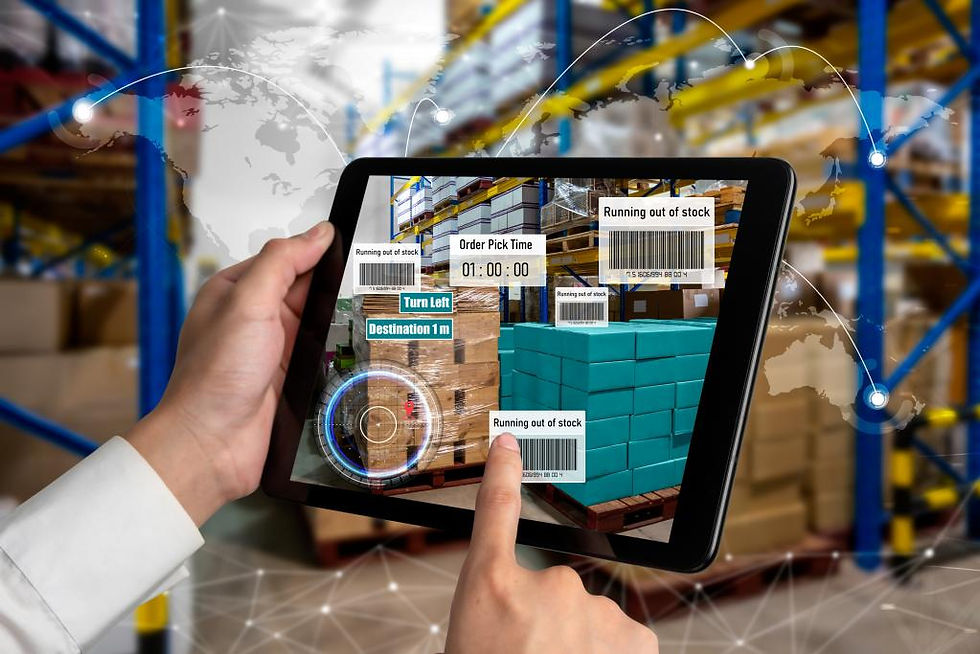Supply Chain for SME: How Small Businesses Can Overcome Global Disruptions
- Cinnex Resources

- May 14
- 5 min read

Supply chain for SME has become a critical issue that can no longer be ignored. While large corporations may have the capital, resources, and diversified networks to weather global disruptions, small and medium-sized enterprises (SMEs) are often left exposed. In 2025, the pressure on SMEs has reached unprecedented levels. Tariffs, shipping delays, rising material costs, and labor shortages have created a storm that threatens the very foundation of small business operations.
Unlike their larger counterparts, SMEs operate with limited buffer capital. Every delayed shipment, every cost increase, and every missed delivery can have an immediate and damaging impact on their financial health. For companies dependent on a small group of suppliers, even minor supply chain hiccups can escalate into major crises. The supply chain for SME needs to be far more flexible, lean, and responsive if small businesses are to survive and thrive.
One of the biggest challenges for SMEs in managing the supply chain for SME is visibility. Without real-time data, SMEs are left guessing about inventory levels, supplier status, and delivery timelines. Manual processes and spreadsheets dominate operations, making it impossible to react quickly to changing conditions. When global disruptions occur, SMEs are often the last to know and the least equipped to respond. The traditional supply chain for SME, built on outdated processes, is breaking under the pressure.
The consequences are serious. Missed customer orders lead to lost revenue and damaged relationships. Rising procurement costs eat into already-thin margins. Inventory shortages force businesses to make difficult choices about which customers to prioritize. In competitive markets, customers rarely wait. If one business cannot deliver, they quickly turn to a competitor. A fragile supply chain for SME thus directly threatens customer loyalty and long-term viability.
Shipping delays and fluctuating logistics costs have added another layer of complexity. Freight costs have skyrocketed in recent years, disproportionately affecting SMEs that lack the negotiating power of bulk shippers. SMEs often pay premium rates for slower service, while large enterprises lock in favorable contracts. This inequality further stresses the supply chain for SME, forcing smaller businesses to either absorb higher costs or pass them on to increasingly price-sensitive customers.
Moreover, many SMEs are deeply reliant on regional suppliers. While this strategy offers convenience and relationship-building advantages, it also exposes SMEs to concentrated risks. When one supplier faces production delays or regulatory issues, the ripple effect across the supply chain for SME can be devastating. Unlike large corporations with multiple sourcing options, SMEs often do not have the resources to pivot quickly.
In this reality, the need for supply chain for SME transformation is undeniable. Rigid, bureaucratic supply chains designed for predictability must give way to dynamic, responsive systems capable of adapting in real-time. The future supply chain for SME must prioritize flexibility, speed, visibility, and cost-efficiency. Waiting for conditions to stabilize is no longer an option; SMEs must take proactive steps to modernize their supply chains today.
The shift toward digital transformation is central to this effort. In the new landscape, success depends on building smarter, more agile supply chains powered by technology. For the supply chain for SME, this means embracing digital procurement platforms, automating inventory management, and using real-time analytics to inform operational decisions. SMEs that rely on manual workflows will fall behind, while those that leverage digital tools will gain competitive advantages in resilience, efficiency, and customer satisfaction.
Procurement is one of the first areas where transformation must occur. Traditional procurement processes are slow, opaque, and prone to errors. In a modern supply chain for SME, procurement must be automated, data-driven, and predictive. Platforms that provide supplier visibility, cost comparison, and contract automation help SMEs respond quickly to market changes, secure better deals, and avoid costly delays.
Inventory management is another critical battlefield. SMEs must move away from reactive stock replenishment models and adopt predictive inventory management strategies. Using historical data, market trends, and AI forecasting, SMEs can anticipate inventory needs, minimize stockouts, and reduce carrying costs. In the world of supply chain for SME, a warehouse full of unsold goods is as dangerous as an empty shelf.
Operations, too, must become more intelligent and automated. Smart dashboards, predictive analytics, and real-time alerts empower SMEs to monitor the entire supply chain for SME with minimal manual intervention. When a disruption occurs, businesses can react within hours, not weeks. Fast decision-making, enabled by digital tools, is the new competitive currency.
This is precisely where Cinnex comes in. Cinnex was built to empower SMEs to modernize their supply chains without the pain and complexity of enterprise ERP systems. While traditional ERPs require months or even years to implement and are often bloated with unnecessary features, Cinnex offers a rapid, two-month deployment designed specifically for the supply chain for SME.
Cinnex brings automation to the heart of SME operations. AI Agents within the platform handle routine tasks across procurement, inventory, and finance. Instead of dedicating precious human resources to manual order processing or supplier tracking, SMEs can rely on AI to manage these functions with greater speed and accuracy. This automation dramatically reduces operational costs and minimizes human error—a major vulnerability in the traditional supply chain for SME model.
Moreover, Cinnex provides real-time visibility into every node of the supply chain. Whether managing inbound shipments from multiple suppliers, monitoring warehouse inventory, or tracking customer orders, Cinnex gives SMEs the information they need at their fingertips. No more waiting for end-of-week reports. No more making decisions based on stale data. In the modern supply chain for SME, real-time information is power.
Cost-saving is another area where Cinnex shines. By automating cost analysis, recommending optimal sourcing strategies, and simulating different procurement scenarios, Cinnex helps SMEs reduce overhead, negotiate better with suppliers, and preserve margins even in volatile markets. The ability to run predictive cost models enables smarter financial planning—a crucial advantage for SMEs operating on tight budgets.
Ultimately, Cinnex transforms what used to be manual chaos into an intelligent, efficient system. It does not just digitize the old supply chain for SME; it reimagines it for speed, resilience, and growth. For SMEs facing shrinking margins, volatile supply chains, and increasingly demanding customers, Cinnex offers not just a survival strategy—but a roadmap to thriving in an unpredictable world.
As supply chain volatility continues to intensify, SMEs cannot afford to be reactive. A passive approach to supply chain management is a recipe for disaster. Success in 2025 and beyond demands proactive transformation—a willingness to embrace technology, automate operations, and build supply chains that are smarter, faster, and more resilient than ever before.
The global landscape is not going to slow down. Disruptions, tariffs, shipping delays, and raw material shortages are the new reality. SMEs that modernize now will be the ones that capture market share, win customer loyalty, and secure their futures. Those who hesitate will find themselves squeezed out by faster, more agile competitors.
The good news? Transforming the supply chain for SME no longer requires massive capital investment, years of implementation, or complicated system overhauls. Solutions like Cinnex make it possible for SMEs to move quickly, efficiently, and confidently into the future.
The old ways are broken. The future belongs to those who act. Visit https://www.cinnex.co/contact-us today and discover how Cinnex can help you modernize your supply chain for SME—faster, smarter, and with confidence.




Comments